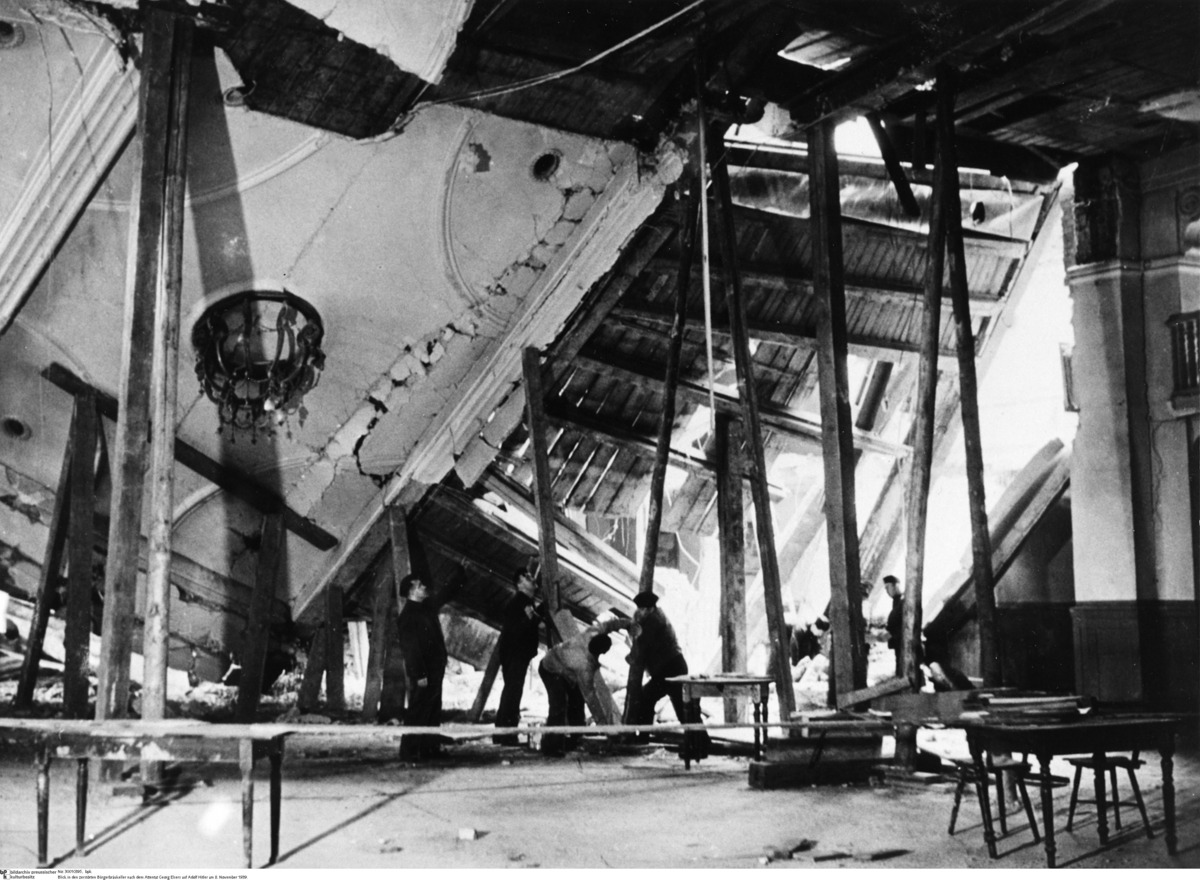Abstract
On the evening of November 8, 1939, a bomb exploded in Munich’s
Bürgerbräukeller [Citizens’ Beer
Hall] during a celebration marking the 16th anniversary of Hitler's Beer
Hall Putsch. Several people were killed or injured. Hitler himself was
not hurt. He had left the event a few minutes earlier than planned. The
bomb had been outfitted with a timer and installed behind the speaker's
lectern in a pillar that perpetrator Georg Elser had spent weeks
hollowing out. Elser had been linked to a few Communist organizations in
the 1920s, but was acting alone in this instance. By assassinating
Hitler, he hoped not only to kill one man but to destroy the entire Nazi
regime, a dictatorship he had strongly opposed for years on political
and moral grounds. Elser was arrested that very same evening and put
into "protective custody." He was shot to death in Dachau on
April 9, 1945. By then, Hitler had survived a series of assassination
attempts, mainly by individuals acting independently. Nazi propaganda
exploited these attempts by presenting them as evidence of Hitler's
enjoyment of divine protection.
